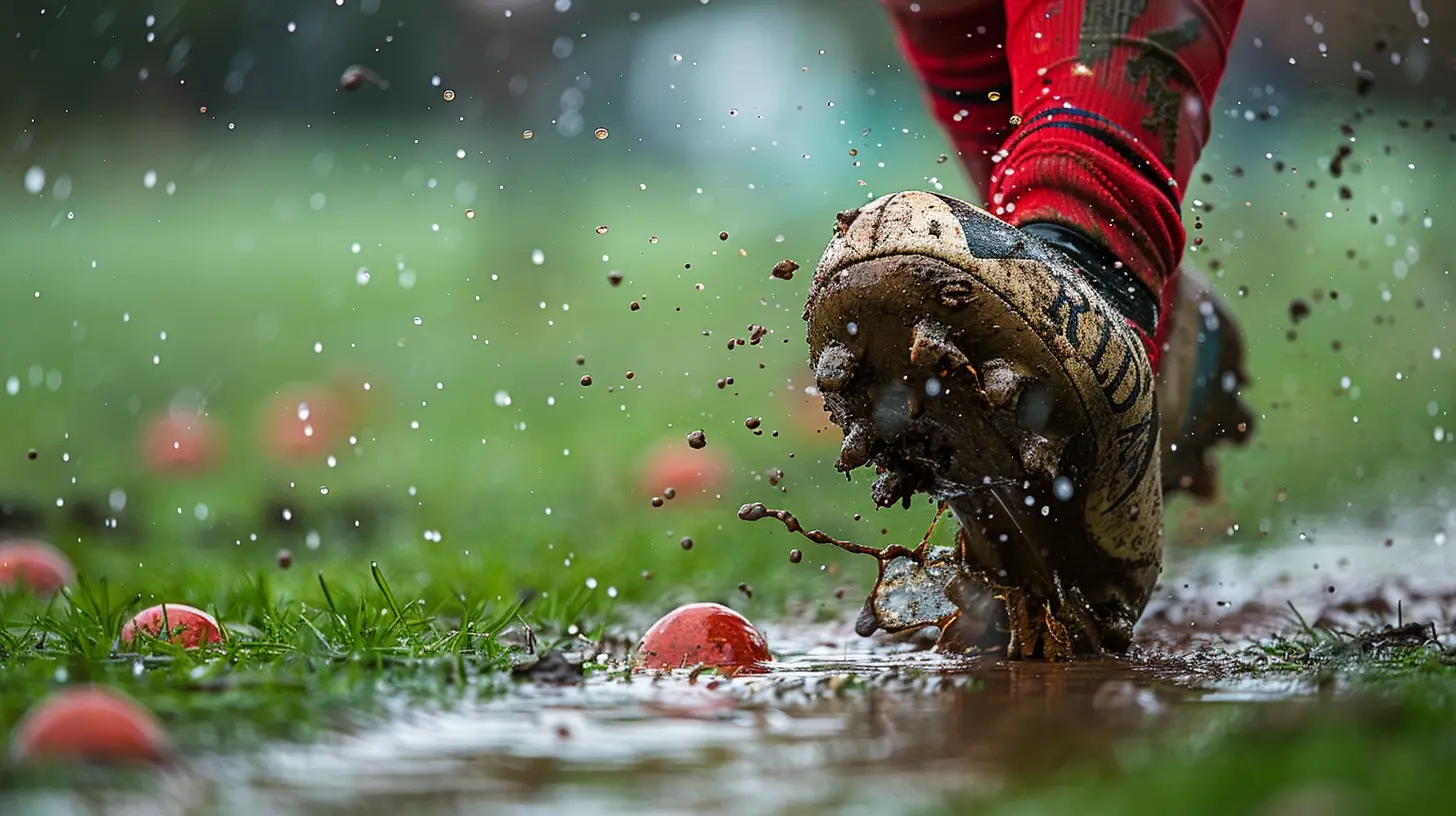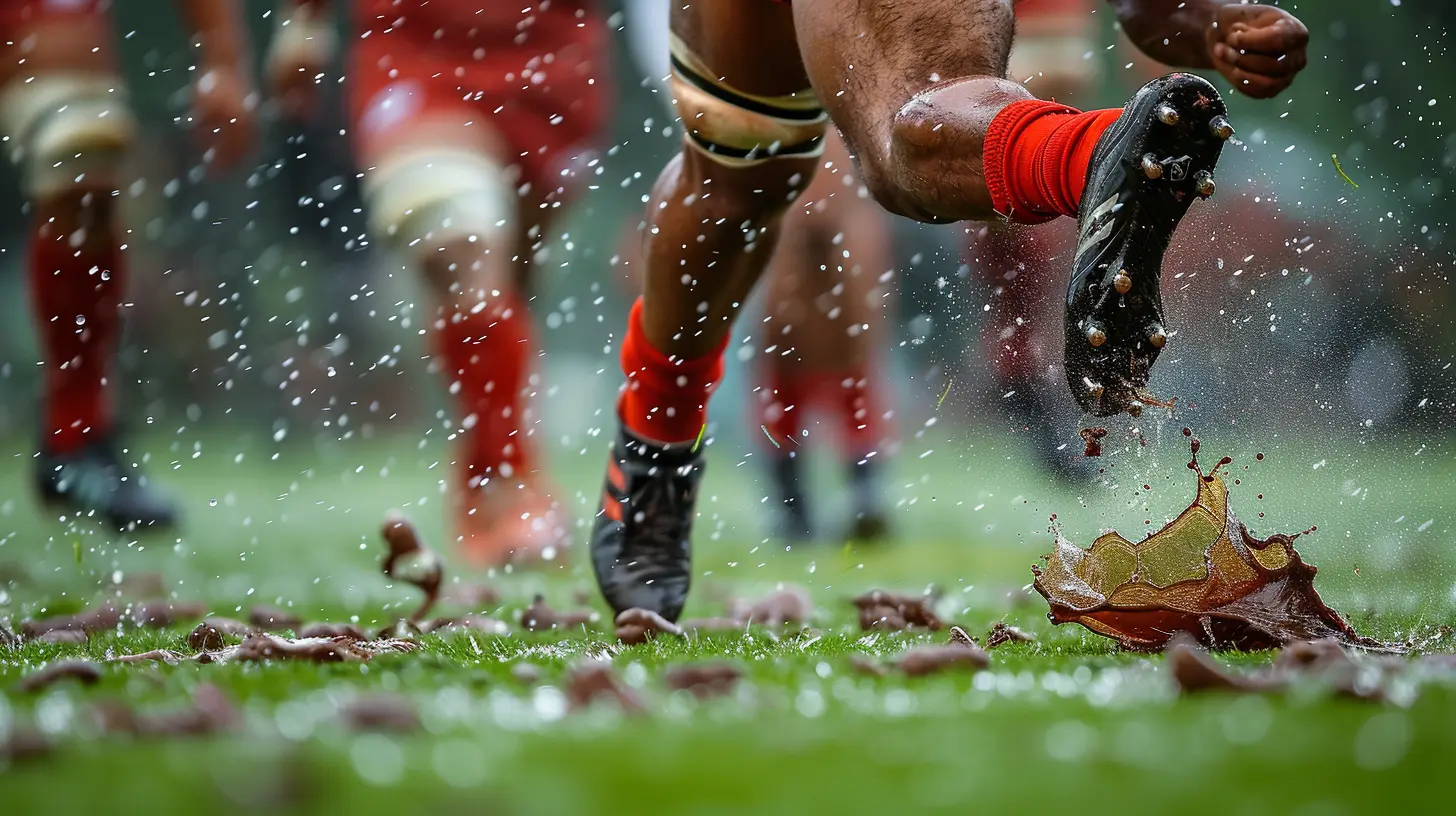The Science Behind Rugby Kicking: From Drop Goals to Conversions
3 July 2025
Rugby might look like a game of brute strength and endless scrums, but when it comes to kicking, it's more of an art form mixed with science. You’ve got these towering athletes, mud-streaked and battle-hardened, stopping for a heartbeat in the chaos to line up a kick—and that one moment could change the entire course of the match.
It’s not just about a strong leg. No, not even close. Kicking in rugby, whether you're talking about conversions, penalties, or the elusive drop goal, demands precision, timing, geometry, and a deep understanding of physics. So, let’s pull back the curtain and dive into the messy, beautiful, and surprisingly scientific world of rugby kicking.
What Makes Rugby Kicking So Crucial?
Before we unpack the science, let’s get something straight: kicking matters. In some games, more than half the points can come from kicks. A well-placed kick can secure territory, put pressure on the opposition, or snatch victory in the final seconds. Just ask any fan who’s watched a match shift in a single swing of the boot.And we’re not just talking about luck here. Great kickers don’t “hope” the ball sails through the posts—they know what they’re doing. So, how do they make it look so effortless?
The Anatomy of a Kick: More Than Just a Swing
Let’s start with what’s actually happening when a player steps up to kick.1. The Physical Side of Things
A kicker’s body is a fine-tuned machine. From posture to follow-through, everything matters.- Core strength keeps the body balanced.
- Hip flexibility allows for a wider range of motion.
- Leg speed generates power.
- Coordination ensures timing isn’t off by even a split second.
Kicking is a full-body motion. The leg, sure, does the kicking—but it’s the rest of the body that sets that leg up for success.
2. Mechanics & Timing
Every kick consists of the approach, plant, swing, contact, and follow-through. A small misstep in any of these stages can send the ball veering off into the stands.Think about a golf swing. Same concept—precise alignment, correct posture, sweet spot contact. Rugby might be rough and tumble, but the kick has to be pure finesse.
The Role of Physics in Rugby Kicking
You didn’t think we’d talk science without bringing in some physics, did you?1. Projectile Motion
Once that ball leaves the foot, it's a projectile. That means it’s subject to gravity, drag, spin—all the stuff you might’ve snored through in high school physics. But here? It’s everything.- Angle of elevation: The ideal kicking angle is around 45 degrees. Too high, and it loses distance. Too low, and it doesn’t clear defenders.
- Velocity: The faster the leg swing, the faster the ball. But speed alone isn’t enough—it has to be directed precisely.
- Spin: Backspin helps with distance and stability. Think of it like giving the ball wings to stay in flight just a bit longer.
2. The Magnus Effect
Here’s where it gets really cool. Ever notice how some kicks seem to curve mid-flight? That’s the Magnus Effect. When a spinning ball moves through the air, it creates pressure differences around it, causing it to swerve.Kickers like Jonny Wilkinson or Dan Carter mastered this, curling balls around defenders like something out of The Matrix.
Drop Goals: The Trickiest of Them All
Let’s not sugarcoat it—drop goals are hard. Like, really hard. You’ve got to time your drop perfectly, strike the ball just as it bounces, dodge defenders trying to crush you, and aim between two posts from 40 meters out—all in seconds.The Science of the Bounce
The rugby ball isn't round—and that’s a blessing and a curse. A misshaped oval means unpredictable bounces, but if you know how to read the ball, you can time your strike perfectly.- Drop height: Too high, and the ball takes too long to bounce. Too low, and you might kick the ground instead.
- Angle of the ball: Tilting the ball forward a bit helps it bounce predictably.
- Surface conditions: Wet pitch? The bounce changes. Dry, grassy field? Expect a cleaner rebound.
Combining all of that while someone’s charging at you? That’s poetry in motion.
Conversions and Penalties: Precision Under Pressure
Conversions might look easy compared to a drop goal, but the pressure that comes with them is enormous. You just scored a try—now the whole crowd is watching to see if you can seal the deal.Targeting the “Sweet Spot”
Every kicker has their own setup. Some take five steps back and two to the side. Others have a little ritual dance. It’s not superstition—it’s muscle memory.From that position, they’re judging:
- Distance and elevation
- Wind direction and speed
- Ball positioning on the tee
- Mental focus (which, let’s admit, is huge here)
Mental Game: Kicking in the Clutch
If you’ve ever had to perform under pressure, you know the brain can be your biggest ally—or your worst enemy. Sports psychologists say over 80% of a successful kick comes down to mental state.Some techniques kickers use:
- Visualization
- Breathing exercises
- Focal points on the target (aim small, miss small)
It’s not just about clearing the posts—it’s about shutting out the noise.
The Equipment Factor: It's Not Just the Boots
Would it surprise you to know that even the type of boot impacts a kicker's game? It does.- Stud configuration: Impacts stability during the plant.
- Boot weight: A lighter boot allows quicker leg swing.
- Material: Softer uppers improve touch, but harder ones can offer more power.
Then there’s the ball. Rugby balls vary slightly based on brand, weather resistance, grip texture, and air pressure—all of which affect trajectory.
Even the best kicker in the world needs to adapt to the gear they’re given.
Training for the Perfect Kick
So, how do players learn to kick like pros? Repetition. Like, crazy amounts of it.Drills and Practice
Kickers might take hundreds of kicks every week from every angle possible. They train with:- Wind machines to simulate real-life conditions.
- Video analysis to break down mechanics frame by frame.
- Wearable tech to track leg speed, torque, and angle.
It's a blend of traditional hard work and high-tech support.
Feedback Loop
Great kickers are obsessed with feedback. They analyze which part of the foot made contact, what the follow-through looked like, and how the ball responded. They become students of the craft.Some Legendary Kicks That Changed the Game
You probably remember a few famous ones—moments frozen in time where the stakes were sky-high.- Jonny Wilkinson (2003 Rugby World Cup Final): Drop goal in extra time. Enough said.
- Dan Carter (2015 Final): That clutch long-range drop goal that broke Australian hearts.
- Ronan O’Gara (2009 Grand Slam): His last-minute drop goal secured Ireland’s first Grand Slam in 61 years.
These weren’t lucky hits. They were the result of science, smarts, and nerves of steel.
Final Thoughts: The Magic Behind the Boot
When you watch a rugby match next time, don’t just focus on the tackles or the tries. Watch the kickers. Watch how they prepare, pause, and execute. Because behind every goalpost-seeking kick are years of grind, physics at play, and a calm mental storm.Rugby kicking is more than just putting foot to ball. It’s geometry meeting grit. It’s science wrapped in heart. It’s what turns good players into game changers.
So now that you know the secret sauce behind those jaw-dropping kicks, won't you look at the game a little differently?
all images in this post were generated using AI tools
Category:
RugbyAuthor:

Ruben McCloud
Discussion
rate this article
1 comments
Meagan Hill
Kicking in rugby: where aiming for the posts is as tricky as finding a clean pair of socks on laundry day! Who knew physics could make you feel like a superhero... or a total klutz?
July 11, 2025 at 2:52 AM

Ruben McCloud
Absolutely! Rugby kicking is a fascinating blend of skill and physics, making every attempt both challenging and thrilling—just like laundry day! Thanks for the fun analogy!


